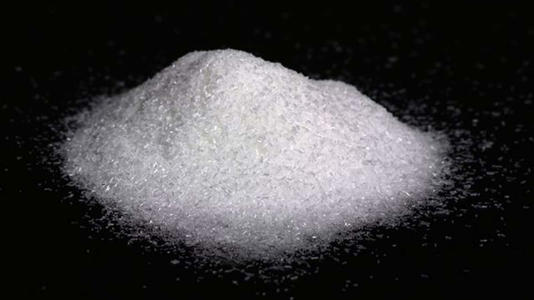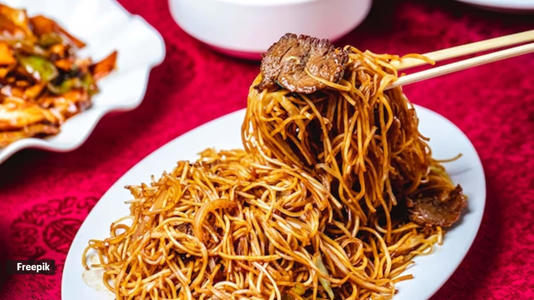
Hêål†h ñêw§ | ᴱᵈⁱᵗᵉᵈ ᵇʸ ᴿᵃᵗᵘ ᴮʰᵉⁿᵍʳᵃ | ᵁᵖᵈᵃᵗᵉᵈ: ᴼᶜᵗᵒᵇᵉʳ ²3, ²⁰²³ 06:46 ᵃᵐ ᴵˢᵀ
Knowing where MSG comes from in your food is crucial (source: Wikimedia Commons).
Monosodium glutamate (MSG), a popular food ingredient used to improve food flavor, is marketed under the brand name Ajinomoto. Although the umami-producing substance has been demonized for a long time, chef Ajay Chopra thinks it may be used sparingly for flavor. “Certainly! Yes, ajinomoto is safe to eat and not as toxic as many think. To enjoy the oh-so UMAMI, though, always remember to keep the measurements and frequency under control, said Chopra.
Let’s explore in detail what ajinomoto is and how it is incorporated into our cuisine.
“In spite of the controversies surrounding MSG over the years, it’s critical to realize that most people consider it harmless when ingested in moderation. MSG is a flavor enhancer that gives food the umami taste, which is frequently characterized as a savory, meaty, or brothy flavor “Primus Super Speciality Hospital’s head dietician, Ankita Ghoshal Bisht, explained.
Why is it utilized in cooking?
MSG is mostly used to improve food’s umami, or savory, flavor. It is frequently used in numerous cuisines since it can enhance flavor and attractiveness, according to Dr. Nirupama Rao, a nutritionist at Mumbai’s Rejua Energy Centre.
Ajinomoto is frequently found in processed meals, fast food products, and restaurant cuisine.
Fast food, like as noodles, frequently contains MSG (representative). [Reference: Freepik]
It’s important to remember a couple things, though.
Some people report having symptoms such as headaches, perspiration, and chest pain after eating foods high in MSG. As Dr. Rao puts it, this is frequently called “Chinese Restaurant Syndrome”.
Furthermore, some people can have underlying medical issues that render them more vulnerable to the effects of MSG or be sensitive to excessive quantities of the spice.
Sodium, a mineral found in salt, is abundant in ajinomoto. “Those who have high blood pressure or are at risk of heart disease should be concerned about excessive sodium consumption as it can result in cardiovascular issues and high blood pressure,” stated Shikha Agarwal, the founder of Nurture and a health and wellness consultant.
Like many other dietary additives, moderation is essential. “While MSG is considered safe for most people, consuming extremely large quantities of it may not be advisable,” said Dr. Rao.
Agarwal claims that there is some evidence to support the theory that foods high in ajinomoto may promote overeating because of their increased palatability. “This can contribute to weight gain and obesity over time,” Agarwal stated.
“In such cases, limiting or avoiding foods with added MSG is advisable,” stated Dr. Rao.
How do I monitor my consumption of MSG?
Knowing where your food gets its MSG from is crucial. “Natural food sources of glutamate, such as tomatoes, Parmesan cheese, and mushrooms, also contain glutamate, and these can be part of a balanced diet,” Ghoshal Bisht stated.
A diet high in whole, unprocessed foods is typically seen to be healthier than one that relies heavily on processed foods, which frequently include MSG added for flavor improvement, as Ghoshal Bisht stressed.
Your takeaway: There is no nutritional value to ajinomoto by itself. It’s not a nutritional source to depend on; it’s just an artificial flavor enhancer. Consuming too many of these chemicals can reduce one’s intake of real foods that are higher in nutrients, according to Agarwal.

See also: Is eating a lot of chili oil in your chicken fried rice, like Malaika Arora does, a healthy habit?
It’s recommended by professionals to use MSG or ajinomoto in moderation when cooking. It can improve the flavor of food, but the cornerstone of healthy nutrition continues to be a varied, well-balanced diet focused on whole foods. It’s a good idea to speak with a healthcare professional or a certified dietitian if you have questions concerning MSG or any other food additives for individualized guidance, according to Ghoshal Bisht.
ιηρυт: ιη∂ιαη єχρяєѕѕ







